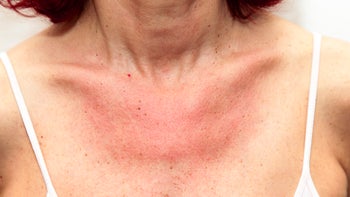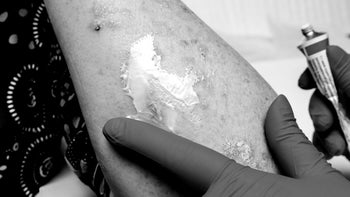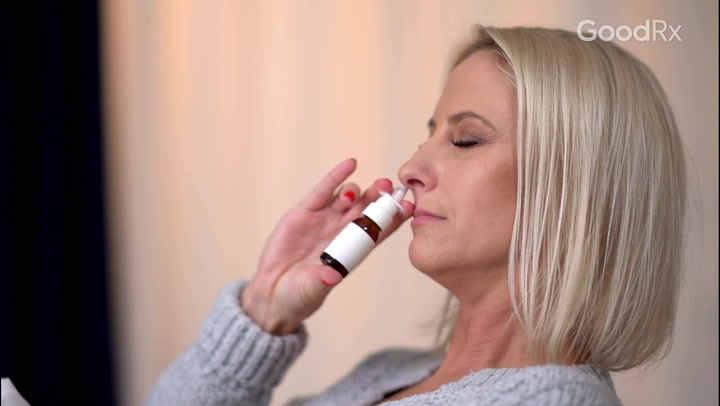
How Much Do Allergy Shots Cost?
Key takeaways:
Allergy shots, a form of immunotherapy, help reduce allergy symptoms.
Allergy shot costs for a course of treatment can range from about $1,000 to several thousand dollars a year without insurance. Many health insurance plans cover this treatment.
Sublingual immunotherapy, known as SLIT, uses allergy drops or tablets placed under the tongue as the treatment delivery method. SLIT can be less costly than allergy shots but isn’t usually covered by insurance.
Table of contents

Allergy shots are a series of injections that can desensitize your immune system from triggers that cause allergic reactions. They are a type of immunotherapy known as allergy immunotherapy.
Also called subcutaneous immunotherapy (SCIT), allergy shots are given on a schedule to stop or reduce allergy attacks. Each shot contains a customized serum with a small amount of the substance or substances that cause your allergic reaction.
Allergy shot costs can seem high at first because treatment is personalized and typically long term. Many insurance plans cover allergy shots, though you may have out-of-pocket costs. However, you might save money over time because you don’t have the continuing expenses of managing symptoms or missing work.
Search and compare options
What is the average cost of allergy shots without insurance?
Allergy shots could cost you several thousand dollars a year without insurance. The cost of your allergy shots will vary depending on:
The length of your treatment plan
The amount of serum you require
Your location
You are typically charged for each set of personalized serums, which typically expire in 1 year or sooner. You are charged a separate fee each time you have injections. During your buildup phase, you will typically get shots more than once a week. Once you reach your maintenance phase, you will receive shots once or twice a month — and your costs typically decrease.
Cost scenarios
Florida Health Price Finder, a state-run healthcare cost transparency site that derives data from commercial health insurance claims, offers price estimates for nearly 400 common services.
These are the website’s cost estimates for allergy injections for services including 2 office visits with a specialist and 16 visits for allergy injections:
Location | Average cost range |
|---|---|
U.S. | $965-$1,994 |
Florida | $1,094-$1,705 |
Orange County, Florida (Orlando area) | $1,005-$1,502 |
This estimate may be on the low end, because a typical course of treatment would require more than 16 injection visits.
At one national chain of allergy and immunology clinics, here are the expected allergy shot charges for a cash-pay consumer:
Serum cost* | Injection administration fee |
|---|---|
1 vial: $598 | $25 |
2 vials: $1,196 | $29 |
3 vials: $1,794 | $29 |
*Note: Vials prepared by this practice expire every 6 months. The cost of your entire course of treatment depends on how long you receive shots.
Immunotherapy expenses: Find out which factors contribute to the cost of immunotherapy and how you can save on these treatments.
Do allergy shots work? Here’s what you need to know about the treatment's efficacy, the timeline ahead, and maintenance.
Zyrtec having no effect? You might find that your usual strategies for managing allergies aren’t helping like they used to. We can help you figure out your next steps, and break down your options going forward.
For a person requiring 2 vials, you’ll need 2 sets of those vials for a year of treatment. If you have injections twice a week for 6 months, then twice a month for 6 months, your costs for allergy shots at this clinic would be about $4,000 for a year of treatment.
Sample year of costs
Injection phase | Calculation | Cost |
|---|---|---|
Buildup (6 months) | $1,196 for vials, plus 24 weeks (6 months) of twice-a-week injections ($29 x 24 x 2 = $1,392) | $2,588 |
Maintenance (6 months) | $1,196 for vials, plus 6 months of twice-a-month injections ($29 x 6 x 2 = $348) | $1,544 |
Total | $4,132 |
Other costs
Some out-of-pocket costs of allergy shots are indirect, including:
Time away from work, school, and family for doctor appointments
Lost wages from missing work
Transportation expenses, such as parking, tolls, ride-sharing fees, and public transit fares
If you are calculating your total cost of allergy treatment, you also may want to include charges for the initial allergy testing that confirmed your allergen(s).
Are allergy shots covered by insurance?
Your health insurance plan may cover allergy immunotherapy, but you might have to meet your deductible as well as pay a copay per shot. You also may have an additional copay or coinsurance for your office visit.
Original Medicare
Original Medicare covers allergy immunotherapy deemed medically necessary under Part B. Medicare allows serum mixes to be used for no longer than 12 months.
Medicare Advantage
Medicare Advantage plans meet or exceed the benefits of original Medicare. Check with your plan to determine how allergy shots are covered.
Medicaid
Medicaid is a public health insurance program run by states and territories. With every state, the District of Columbia, and five U.S. territories, that means there are 56 different programs. Allergy immunotherapy is covered by most Medicaid programs.
Commercial insurance
Many commercial health insurance plans cover allergy shots. The specifics of your health plan will be covered in your summary of benefits and coverage, known as the SBC.
Tricare
Tricare covers allergy treatment, including allergy shots.
What can you expect to pay out of pocket for allergy shots?
Out-of-pocket costs for allergy shots vary, depending on your coverage.
If you’re covered by commercial health insurance, you may have cost-sharing for your serum. You also may have a copay for each injection, as well as a copay or coinsurance for each office visit.
If you have Medicare Part B, you must meet your Part B deductible. After that, you will pay 20% of the approved amount for services.
If you use a health savings account (HSA) or flexible spending account (FSA), your out-of-pocket costs for allergy shots are considered qualified expenses that can be reimbursed.
How do allergy shots work?
Allergy shots tame your immune system’s response to allergens. They expose your body to a small amount of allergen in order to allow your immune system to “get used to” it. Buildup injections start the “training” process and may last 6 months or longer while the amount of allergen gradually increases. Eventually, your immune system will mount less of a response with high doses of allergen. Treatment typically includes a maintenance phase that can last several years, during which you get injections less often.
Types of allergy shots
Allergy immunotherapy treats reactions from many sources, including:
Seasonal allergens: Trees, grasses, and pollen can trigger allergic reactions in the spring. Leaf mold can also prompt an allergy response.
Indoor allergen immunotherapy: Mold, dust mites, cockroaches, and pet dander are common irritants found in homes, schools, and other buildings.
Insect stings: Some people have a more pronounced and immediate reaction to bites from insects, including fire ants, bees, hornets, and wasps.
Prescription allergy injections
Most food allergies are not effectively treated with allergy shots. However, in 2024, Xolair (omalizumab) — an injectable medication — was FDA-approved for lowering the risk of food allergy reactions after exposure in adults and children at least 1 year old. GoodRx coupons are not available for this specialty medication.
If you have commercial insurance, you can save with the Xolair Co-Pay Program. Eligible consumers could have no out-of-pocket costs, because the program offers annual assistance up to $15,000 for medication costs and/or up to $1,500 to cover injection administration fees.
How often do you need allergy shots?
The frequency of your allergy shots depends on your treatment plan. During the buildup phase, you typically get injections 1 or 2 times per week for 3 to 6 months. In the maintenance phase, you may need a shot every 2 to 4 weeks. The maintenance schedule can last 3 to 5 years, depending on how your body responds.
Some people experience continued relief for years after their allergy shots end. Others find some relief but still have to use allergy medications. It’s possible for symptoms to resurface once the injections stop.
Are allergy shots more cost-effective than OTC medications?
Over-the-counter (OTC) medications can be effective for temporary relief of allergy symptoms. But allergy shots are a longer-term solution that may save you money over time. Allergy shots are often cheaper than the combined costs of doctor appointments, prescription and OTC medications, missed time at work or school, emergency room visits, and misery.
For people with asthma or allergic rhinitis (seasonal allergies or hay fever), immunotherapy for allergies is often more cost-effective than their annual expenses for long-term prescription medications alone.
Are there more affordable alternatives to allergy shots?
Another form of long-lasting allergy treatment is called sublingual immunotherapy (SLIT), where drops or tablets are placed under the tongue.
A study published in 2018 found that SLIT was the most cost-effective immunotherapy for allergic rhinitis. Because you can take the treatment yourself at home, school, or work, there are no additional costs, such as insurance copays or missed time from other commitments. According to the Johns Hopkins Sinus Center, SLIT costs about $2 a day for the average person.
However, SLIT is considered “off-label,” or unproven therapy, and is not covered by original Medicare and many other health insurance plans. That’s why it’s important to check your plan’s SBC.
The bottom line
Allergy shots are a form of immunotherapy that help reduce your reactions to allergens. Injections can cost from $1,000 to several thousand dollars a year without insurance, depending on the number of vials of custom serum and the number of injections you require. Many health insurance plans cover allergy shots.
If you have food allergies, Xolair (omalizumab) may reduce your risk of an allergic reaction. It’s an injectable prescription medication that was FDA-approved in 2024. Consumers with commercial insurance plans can save on the medication and injection administration fees through the manufacturer co-pay program. Sublingual immunotherapy, known as SLIT, involves drops or tablets that are placed under your tongue. This treatment can be less costly than allergy shots, but it may not be covered by your insurance plan.
Why trust our experts?



References
Allergy & Asthma Network. (n.d.). Immunotherapy – allergy.
AllerVie Health. (n.d.). Allergy & Asthma Center: Fee schedule.
American Academy of Allergy Asthma & Immunology. (n.d.). Immunotherapy (allergy shots) definition.
American Academy of Allergy Asthma & Immunology. (n.d.). Allergy shots (immunotherapy).
American Academy of Allergy Asthma & Immunology. (2023). Immunotherapy can provide lasting relief.
American College of Allergy, Asthma & Immunology. (n.d.). Allergy immunotherapy.
American College of Allergy, Asthma & Immunology. (2017). Allergy shots.
American College of Allergy, Asthma & Immunology. (2017). SLIT: Sublingual (under the tongue) immunotherapy is an alternative way to treat allergies without injections.
Bright, D., et al. (2019). Allergy immunotherapy: Who, what, when … and how safe? MDedge Family Medicine.
CMS.gov. (n.d.). Allergy immunotherapy. Centers for Medicare & Medicaid Services.
CMS.gov. (n.d.). Antigens prepared for sublingual administration. Centers for Medicare & Medicaid Services.
Kaiser Permanente. (2023). Allergy shots for allergic rhinitis: Treatment Overview.
Link, J., et al. (2023). Medicaid coverage of guidelines-based asthma care across 50 states, the District of Columbia, and Puerto Rico, 2021–2022. Preventing Chronic Disease.
Medicare.org. (n.d.). Does Medicare cover allergy shots?
National Institute of Allergy and Infectious Diseases. (2024). Food allergy treatment research.
Stachler, R. (2020). Hidden costs of allergy shots. The American Academy of Otolaryngic Allergy.
Tankersley, M., et al. (2021). Subcutaneous immunotherapy takes more than the time in the clinic. Current Medical Research and Opinion.
Titulaer, J., et al. (2018). Cost-effectiveness of allergic rhinitis treatment: An exploratory study. SAGE Open Medicine.
Tricare. (2023). Does Tricare cover allergy services?
U.S. Food & Drug Administration. (2024). FDA approves first medication to help reduce allergic reactions to multiple foods after accidental exposure.
Xolair. (n.d.). The Xolair co-pay program.

























